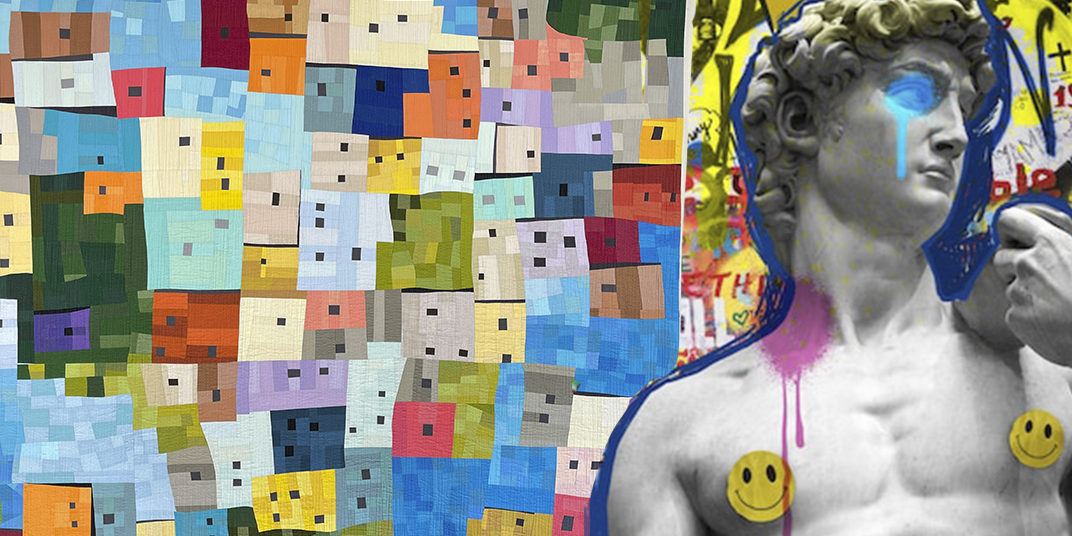When you hear the word maximalism, you might picture clutter and mismatched design elements. Maximalism does favor a bold, eclectic, and colorful appearance. However, maximalism in art and quilting is about more than just excess.
This type of style is the opposite of minimalism, which is a style characterized by the “less is more” mentality. Instead of incorporating limited design elements and colors, maximalism embraces vibrant colors in a “more is more” mentality. If you’re looking for a style that focuses on individuality and uniqueness, you’ll love maximalist quilts that emphasize visually rich appearances.



The fun and bold characteristics of maximalism make it a popular quilting style. You can choose to use a variety of colors and fabrics to make a beautiful quilt. Maximalism is also known for being a sustainable style, as the mix-and-match approach allows for the repurposing of leftover fabric scraps. If you’re interested in the unique and eclectic style of maximalism, we’ll go over the basics of the look seen in art and quilting.
What Is Maximalism?
Maximalism is a style that directly challenges minimalism. Whereas minimalism adopted an approach that favored few design elements to make a bold statement, maximalism incorporates many differing elements for a unique and vibrant look. Some of the defining characteristics of maximalism include:
Vibrant and varied color choices, interesting patterns, an emphasis on personal creative expression and exploration and a bold designs
The History of Maximalism

Maximalism wasn’t coined until recently as a reaction to the minimalist movement. However, traces of the movement have been noted throughout history. The Art Nouveau movement (1890s onward) had attributes and characteristics that today’s maximalism is based on.
Examples of Maximalism in Art
One of the biggest indicators of maximalism in art is color. Maximalist paintings emphasize vibrant and varied colors to create a unique and visually rich piece with layered depth. Miriam Shapiro‘s artwork utilized different techniques and materials, such as quilting, paint, lace, and others to create interesting collages. As part of the pattern and decoration movement, her work was highly eclectic and made use of various design elements to create these collages.
How Is Maximalism Used in Quilting?
Maximalism has developed into many different types of art forms, including fashion, literature, music, and quilts. For those who are interested in visually dynamic quilts with contrasting colors, maximalist quilts offer a lot of style and individuality.

Maximalism in quilting is typically characterized by the abundant use of color. While minimalist quilts generally use neutral colors, particularly for negative spaces, maximalist quilts usually use contrasting colors to create visual appeal, including in negative spaces. A bold color palette is a must for maximalist quilts. You’ll likely see many different colors in a maximalist quilt design.
Patchwork quilts can oftentimes have a maximalist style. To create one, you’ll need a variety of different fabrics that have varying colors and patterns. These types of quilts can often be quite sustainable as you can use up scraps of fabric from other projects. You can also repurpose fabric from other garments to make this type of quilt. Though you can choose any colors you like, maximalist quilts typically have multiple colors that contrast well with each other. You can choose bright and vibrant colors as well as muted colors.
Maximalist quilts may also make use of varying shapes throughout the piece. From curving lines to geometric shapes, there are many different options for maximalist quilts. However, typically maximalist quilts will eschew uniformity in favor of more improvised shapes.
Maximalism is a reaction to the basic and simple minimalism style. Minimalism only incorporates a few carefully chosen design elements, while maximalism includes a variety of colors and patterns. If you love unique personal expression, you’ll appreciate the variety that maximalist art forms bring to a space. In particular, maximalist styles have been adopted in quilting and offer a unique appearance. Though both minimalist and maximalist styles are characteristic of modern quilting, there’s quite a bit of difference between them. The characteristics of maximalist styles emphasize vivid and contrasting colors with plenty of visual interest. If you’re looking to learn more about modern quilting and the role of colors in the craft, you should consider taking one of our courses.





